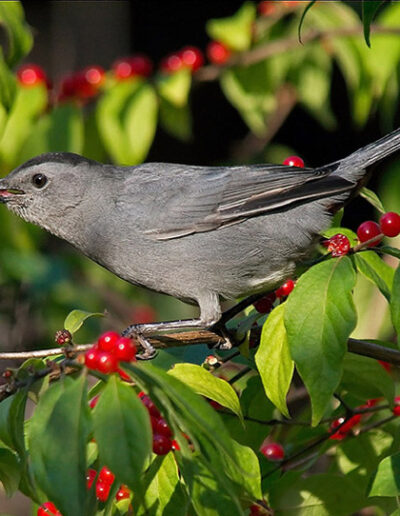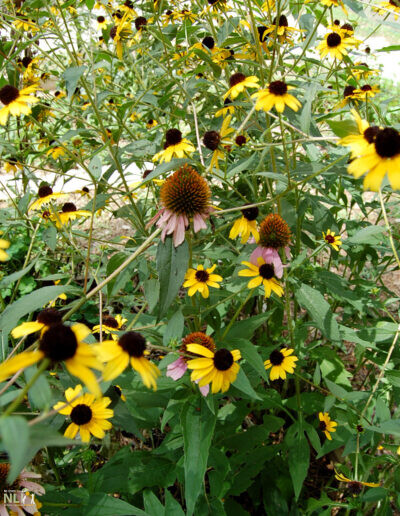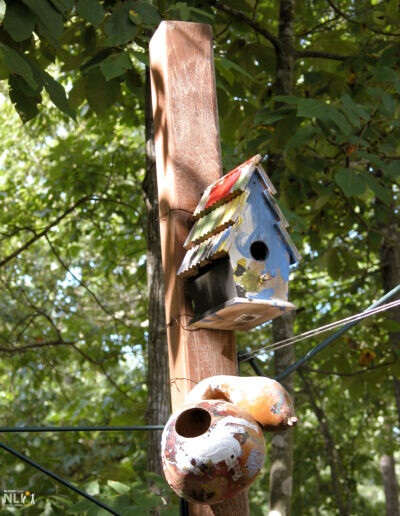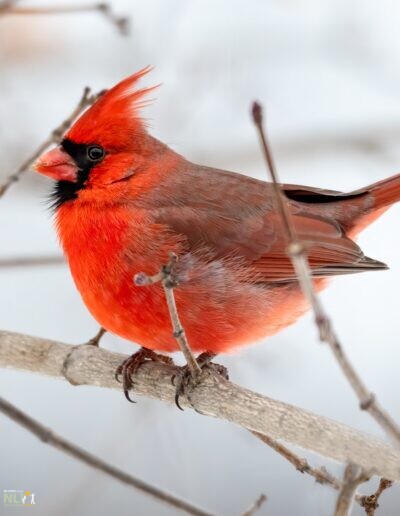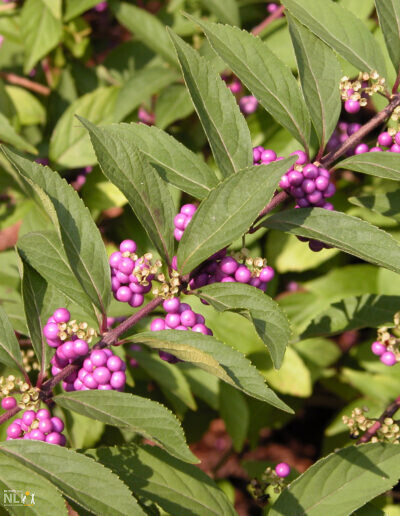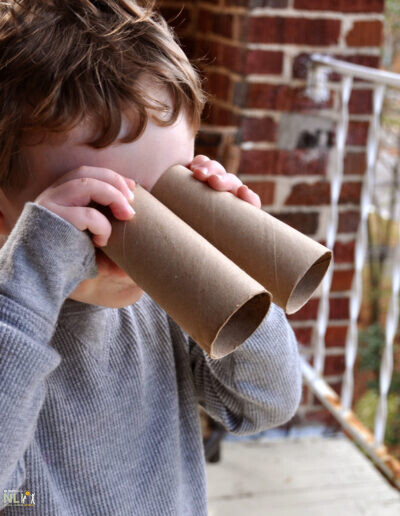27. Attracting Birds to Outdoor Learning Environments
Watching birds is a wonderful way for children to connect with nature. Whether observing them in trees or simply listening for songs, children delight in searching for birds in natural spaces of learning and play. This InfoSheet outlines different strategies for making outdoor learning environments (OLEs) bird-friendly all year round. Encourage children to draw birds they see or make homemade bird feeders, birdhouses, or “binoculars” to get them excited about birds they see and hear!
Disclaimer: The following InfoSheet has been created using information from NC Audubon and the NC Cooperative Extension and is representative of the Southeastern United States.
PLANT IN LAYERS
To create the best bird habitat, select a variety of plants with different heights, flowering times, and growth forms. Vertical diversity ensures that different species of birds have food sources and shelter throughout the year. A mix of groundcovers, flowers, grasses, shrubs, and trees will accommodate many bird species with different nesting behaviors.
YEAR-ROUND WILD FOOD
A diverse palette of native plants provides local birds with food sources they need throughout the year. Native grasses and perennial wildflowers provide seeds for birds in the fall and winter. Leave seed heads at the end of the growing season to provide an additional source of winter food.
MINIMIZE PESTICIDE USE
Many birds eat insects throughout the year, especially as other food sources became scarce with changing seasons. When gardens are treated with pesticides, all insect types are affected— pest removal may also remove a vital protein source for native and migrating birds. Rather than relying solely on pesticides, look to integrated pest management practices to keep gardens healthy and happy.
BIRD FEEDERS AND BIRDHOUSES
Bird feeders and houses create visible bird activity and easy viewing for children. Feeders and houses should be placed within 10-15 feet of shrubby vegetation, allowing birds to hide from larger predators. Place structures at least 30 feet from windows to minimize window strikes by birds. Decorate windows with children’s art to reduce the chance of bird injury.
PLANT LIST FOR ATTRACTING BIRDS:
Trees:
- Black gum, Nyssa sylvatica
- Downy serviceberry, Amelanchier arborea
- Eastern red cedar, Juniperus virginiana
- Flowering dogwood, Cornus florida
- Fringetree, Chionanthus virginicus
- Red oak, Quercus ribura
- River birch, Betula nigra
- Sassasfras, Sassafras albidium
- Southern magnolia, Magnolia grandiflora
- Southern sugar maple, Acer floridanum,
- Willow oak, Quercus phellos
Shrubs:
- American beautyberry, Callicarpa americana
- Arrow-wood viburnum,Viburnum dentatum
- Blackhaw, Viburnum prunifolium
- New Jersey tea, Ceanothus americanus
- Ninebark,Physocarpus opulifolius
- Spicebush, Linderia benzoin
- Virginia sweetspire, Itea virginica
- Wax myrtle, Morella cerifera
Native Grasses and Perennials:
- Aromatic aster, Symphyotrichum oblongifolium
- Black-eyed Susan, Rudbeckia hirta
- ‘Fireworks’ goldenrod, Solidago ‘Fireworks’
- Largeflower aster, Symphyotrichum grandiflorum
- Little bluestem, Schizachyrium scoparium
- New York ironweed, Vernonia noveboracensis
- Purple coneflower, Echinacea purpurea
- Swamp sunflower, Helianthus angustifolius
- Tickseed, Coreopsis pubescens
- Wild quinine, Parthenium inegrifolium
- Yellow indian grass, Sorghastrum nutans
Vines:
- Coral honeysuckle, Lonicera sempervirens
- Cross-vine, Bignonia capreolata
- Trumpet-creeper, Campsis radicans

